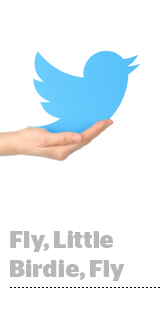
Twitter is a company that always seems on the verge of flight. The potential is there, but the question remains: Will the platform ever be able to fulfill it?
Instability in Twitter’s C-suite doesn’t help. On Tuesday, COO Anthony Noto – second in command to Jack Dorsey – became the most recent top Twitter exec to fly the coop, effective immediately, with plans to take over the CEO role at online lender SoFi Capital on March 1.
There’s no doubt Twitter is trying to boost its user count, increase engagement, sell its value prop, keep Wall Street happy, create more appealing ad products and attract advertisers.
But as WPP CEO Martin Sorrell put it last year while grilling Dorsey during an on-stage interview at Dmexco: “Twitter does not seem to have achieved the prominence that you would want. … Why is that?”
Why, Indeed?
Whenever something happens in culture, news, sports or entertainment, people use Twitter to share, comment and debate.
But Twitter, for better or worse, is also a place to complain. Although Twitter has embraced that role to some extent with features designed to help brands use the platform to handle customer service issues, there’s an unmistakably acerbic tone to the way people engage on the platform.
Reflecting the zeitgeist sounds like a good thing – and a good sell to marketers seeking relevance – but maybe not if people’s timelines are full of flame wars over politics, gender roles, religion and race.
It cuts both ways, said Noah Mallin, managing partner and head of experience, content and sponsorship at WPP agency Wavemaker.
“When there’s a really relevant event, like sports or an awards show, that’s great for marketers, because you’re part of a conversation that’s happening across the world,” Mallin said. “But that can also be an uncomfortable place to be when the conversation turns to political or external crises.”
Although some brands embrace Twitter for what it is – see the snarky banter between MoonPie and Wendy’s on #NationalRoastDay – or are flexible enough to roll with whatever punches a troll might throw, others are hesitant to appear adjacent to news content, as disheartening as that may be for the future of online journalism.
“They look at Twitter the way they might look at sponsoring CNN,” Mallin said. “They’re wary of being associated with that content.”
Although Twitter has been cracking down on hate speech and harassment on its platform, the brand safety concerns are obvious. Because of the way Twitter’s timeline is architected, sponsored posts promoting soap or cereal or deodorant necessarily appear next to bigoted rants.
That is why a linchpin of Twitter’s turnaround strategy is centered on premium video and live streaming through content partnerships with the likes of Bloomberg, BuzzFeed, e-sports company ESL and Fox Sports, all of which are sponsorable and provide brand-safe environments for in-stream ads.
Twitter is picking partners that will produce content that provides more predictable, safer places for brands to be, Mallin said – content that Twitter hopes will, in turn, keep people more engaged within the app for longer than it takes to quickly scroll through a feed.
Wing And A Prayer
It’s unclear how Noto’s departure will affect the video strategy. By all accounts, Noto was the driving force behind the push into video, and his quick exit could be the canary in the coal mine for Twitter’s video ambitions.
Yet Noto is leaving the company just as the headwinds appear to the turning for Twitter, at least from an investor perspective. The company’s stock hit a two-year high in early January buoyed by positive sentiment around the monetization potential of video and product improvements that could lead to more user growth, engagement, ad revenue and profitability in 2018.
And in May Twitter hired Bruce Falck, a former Turn and BrightRoll exec and ad tech vet, to lead its revenue product team. Falck’s solid background in video is a boon for Twitter’s increasingly video-centric monetization strategy.
Twitter could also benefit from Facebook’s recent news feed change, which severely reduces the organic reach of publisher content. If Facebook is no longer a friendly place for distribution, Twitter could become the home for all that lonely publisher content.
And some marketers are bullish on Twitter, like Lou Paskalis, SVP of customer engagement and investment at Bank of America.
Scale’s important, of course, but so is engagement, Paskalis said last week at AdExchanger’s Industry Preview event in New York City – and Twitter fits that bill. [Watch the full video here.]
Facebook may have more users than Twitter – 2 billion monthly actives vs. 330 million, respectively – and far more growth, but Twitter provides a singular form of engagement because it’s a “platform of influencers who generally set the tone,” Paskalis said. “You can actually understand passion points.”
Bank of America uses also Twitter as a learning environment where the brand can run experiments and test new ideas to inform activity on other platforms.
“Maybe we’re zigging when everybody else is zagging,” Paskalis said, “but we have found a tremendous partnership, tremendous insight and tremendous engagement.”
Twitter reports its fourth-quarter earnings for 2017 on Feb. 8.
This post was syndicated from Ad Exchanger.

More Stories
The ultimate Songs of the Summer list for NZ TikTok
Revolt Taps Freya Williams As Chief Strategy Officer for North America
KFC’s fish and chips brings Kiwis to the beach